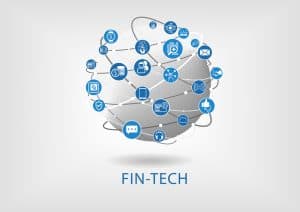
As finance organizations compete for larger shares of the market, adding additional services could provide that differentiating edge.
The Finance industry is changing; that much isn’t a surprise. However, the way things may change over the next ten years might be more of a surprise. Let’s explore some of the things finance experts think will happen by 2030 and beyond.
Finance 2.0 will probably consolidate
Finance consumers created their own personalized services in the past decade or so. Thanks to new avenues for pursuing financial products, consumers used multiple products and took advantage of personalization.
According to a survey from The Financial Brand, experts believe consolidation is coming. As finance organizations compete for larger shares of the market, adding additional services could provide that differentiating edge.
Companies like PayPal have added credit options to their existing payment portals and recently added the ability to buy and store cryptocurrencies. Others have built collaborative partnerships to offer a broader range of services under one roof without the startup cost of adding in-house services.
According to the survey, 52% of respondents believed that we’ll see a reduction of the number of institutions by 25% by the year 2030. 35% believed that more than half of finance organizations would add other services such as healthcare or retail to their existing banking services. These numbers suggest that Finance 2.0 might offer more types of services but offer fewer overall choices for which institutions consumers patronize.
See also: Financial Services 2022: Customer Experience Looms Large
Finance 2.0 will need a “challenger” mindset
Cutting costs won’t bring customers back either. Companies will need to prove they know and understand their customers, bringing innovative products and tools to market that break the rules of what’s been done before.
Companies will need to adopt a challenger mindset to capture and keep the attention of finance product consumers. New fintech disrupters are using data and digital delivery to upend what consumers know and expect from their financial products. Traditional finance institutions, including banking, will need to adopt a nimble approach to R&D.
One surprising outcome of The Financial Brand’s survey is that many experts don’t believe the blockchain and crypto space will contribute to this challenger mindset in the coming decade. While cloud adoption is a given for financial operations, these experts place blockchain operations much further out on the timeline.
So what’s happening here? Finance institutions could be waiting on more concrete guidance from regulatory bodies. They could also be biding their time until the dust settles from crypto controversies such as the SEC’s crackdown on Ripple (XRP). However, for organizations still thinking blockchain and cryptocurrency are a passing fad, 41% believe that blockchain and ledger technology will be used by 75% or more of organizations after this decade.
Finance 2.0 will accelerate innovation in payments
The payments sector took a massive hit with the pandemic and now, priorities have changed. Customers expect speed and flexibility; like other aspects of finance’s transformation, cutting costs won’t be enough to ensure market share. Instead, financial institutions could soon face competition from providers outside the finance industry.
31% of survey respondents believe that more than half of all payment transactions will be initiated through non-bank channels by 2025. Consumers grew to like embedded commerce options, retail platforms offering payment solutions.
Experts also predict the decline of plastic cards, not to mention the absence of cash. However, they still don’t believe that traditional currency will be supplanted by other forms of cryptocurrency and alternative currencies.
The Finance Industry isn’t as confident about digital transformation
Another surprise from the survey is the fall in the number of respondents who are still confident in their digital transformation. The survey found that finance institutions rate themselves lower on the digital transformation maturity scale than before the pandemic.
So what’s happening here? The pandemic forced some realities into play concerning the resiliency and flexibility of current operations and offered a glimpse into any operations that didn’t serve customers. Even more, some of those operations represented heavy investments—something finance may have been reluctant to offload without a significant catalyst.
The survey notes that some predictions before the pandemic may have been overly aggressive without considering whether the finance industry had the underlying structure in place to make it happen.
What’s the required structure for FinTech 2.0?
In order to make the most of new technologies and initiatives, FinTech needs an underlying structure in place. This structure relies on at least three basic things:
- Cloud-based technology stacks: While ultra-traditional finance institutions may have been reluctant to transfer sensitive data to the cloud, FinTech will now need cloud-based systems to keep up.
- Putting data to use: Big data doesn’t mean much without the capability to process and receive real-time insights. FinTech will need to get smarter about its data.
- Leveraged products: FinTech’s embrace of data is only part of the picture. AI and IoT will help not only process data but maintain contracts, monitor regulatory changes, and determine customer behavior.
So what’s the lesson here? FinTech will require deeper connectivity—with customers, with technology, with data—to innovate products and services that customers want. FinTech 2.0 will become more intrinsically connected to the economy in this way. Instead of using technology to push existing services digitally, consumers can look forward to digitally native financial services.
FinTech 2.0 arriving in the next decade
The pandemic accelerated digital transformation and movement towards these new financial systems. Now, experts predict more connection and even more disruption, despite financial institutions feeling even less prepared than previous years.
As we watch changes unfold, consumers should take note that a greater connection to their needs and actions will ensure the survival of financial organizations. Without that connection, companies can’t hope to compete with the onslaught of new, data-driven, technology-first solutions offering consumers greater choice. It’s going to be an exciting new decade.





























